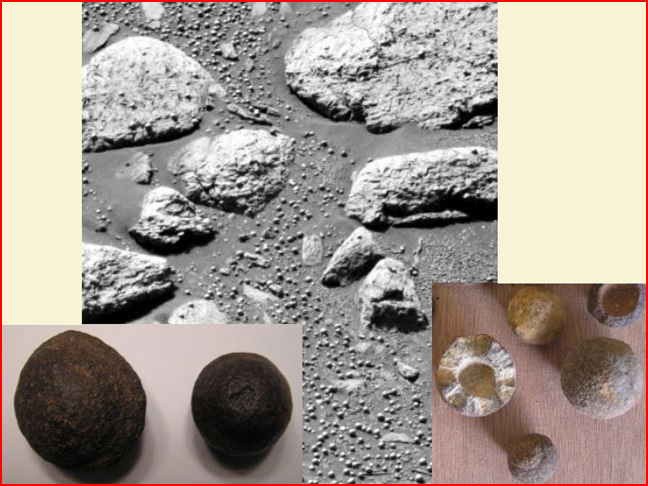items included on the list are the first meteorite ever found on another planet and the possibility that mars smells like rotten eggs from all the sulfur on its surface!! my personal favorite discovery by the rovers was definitely the blueberries!
Scientists aren't completely sure what causes these little rocks to have such spherical shapes and pure contents, but they have a good theory. the BB-sized spheres are mostly made of hematite, an oxide of iron. if the martian spheres are formed similarly to blueberry stones found on earth in utah, then over time, water seeps through cracks, spaces and pores in the martian dirt.... eventually, the hematite dissolves out of the water and the weathering of the area causes the shape (or something like that... geologists, help me out?). so this would mean.... that there was once flowing water on mars!

cool stuff. i havent read much more about these blueberries recently. anyone else seen articles about them? anyway, neat top 10 list and finally some good press for NASA!
